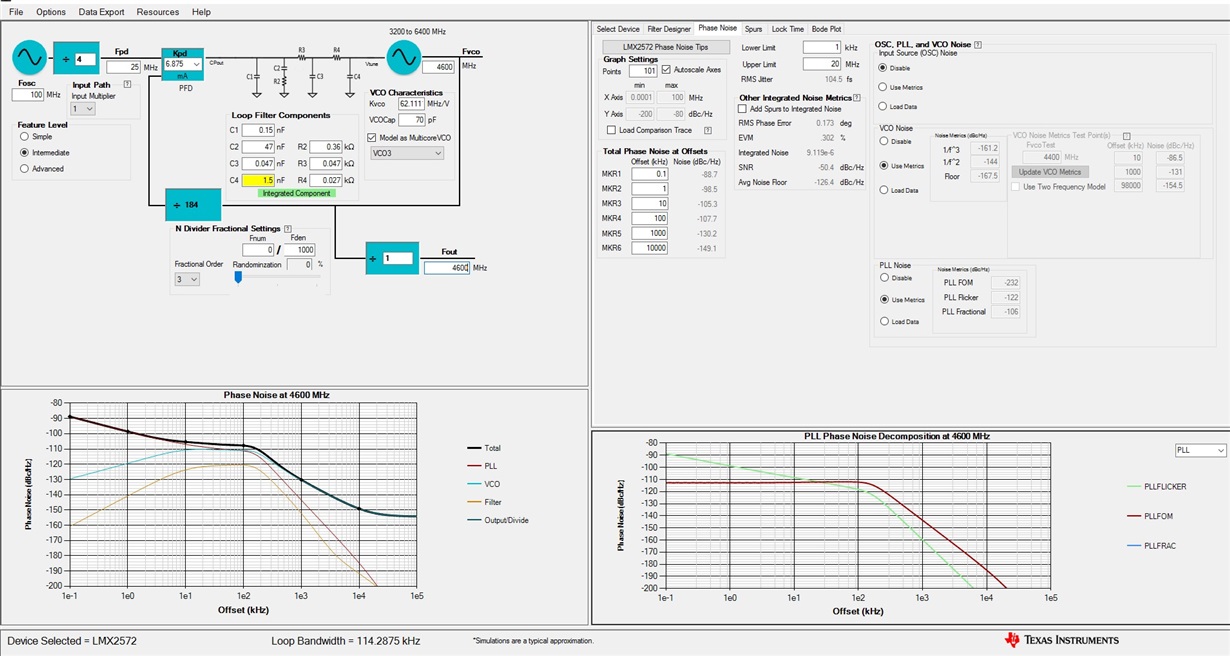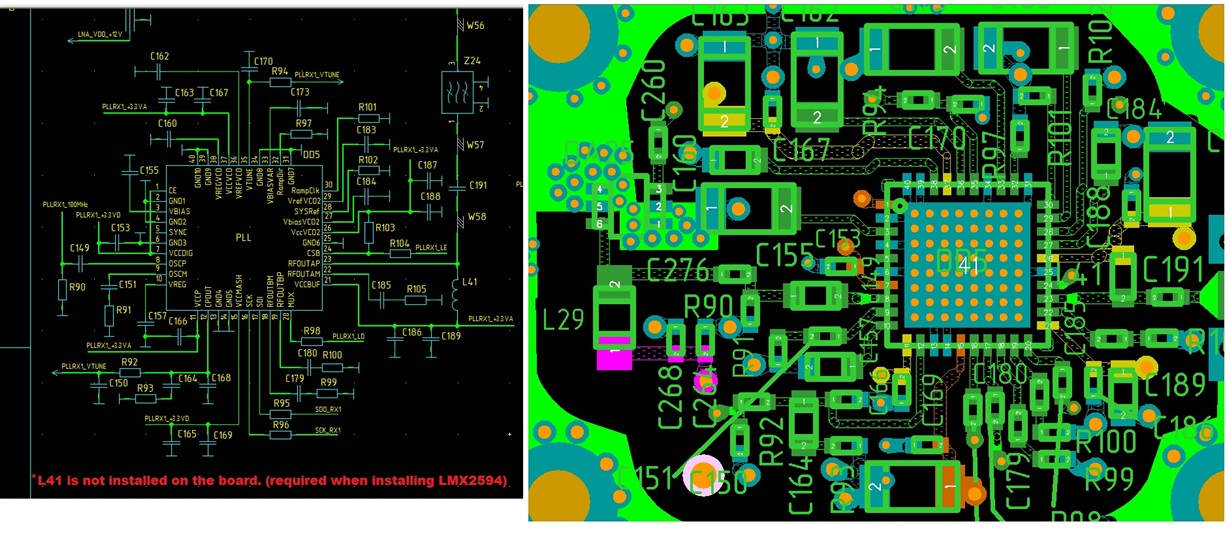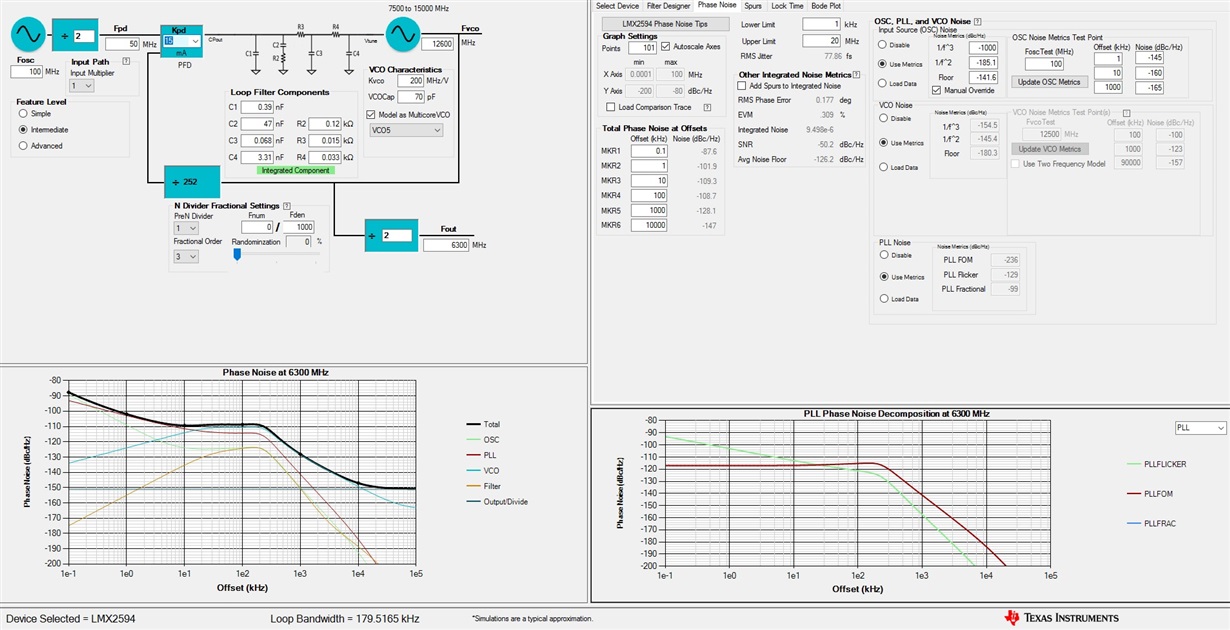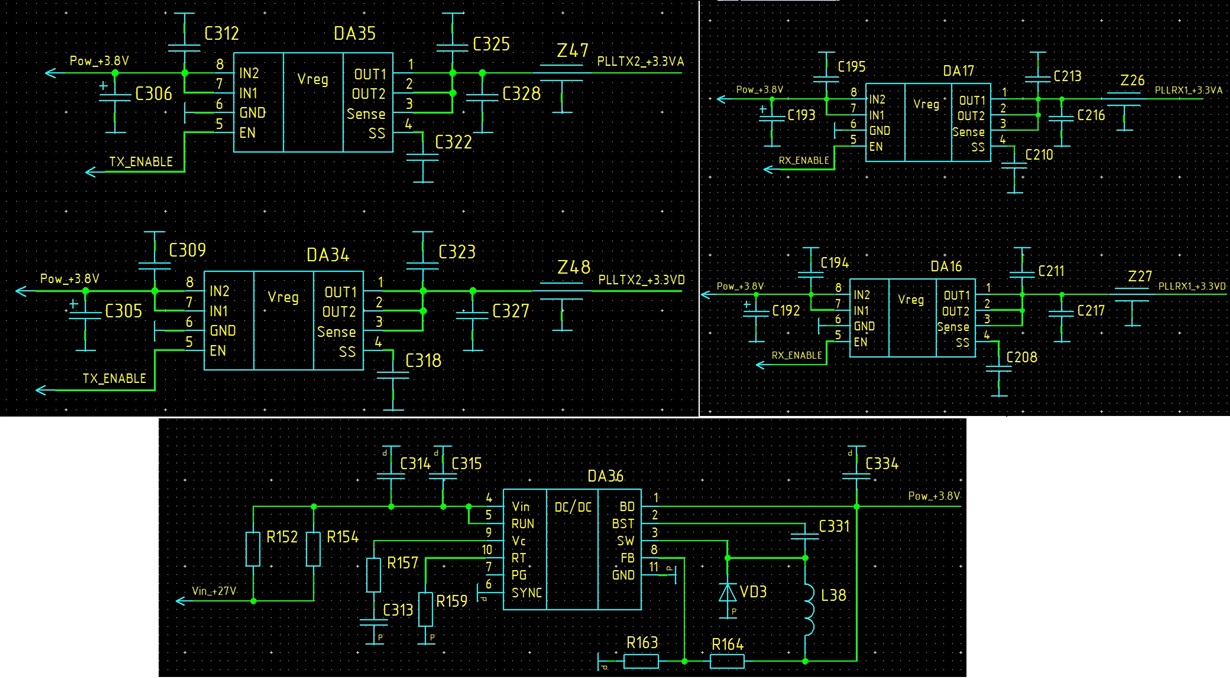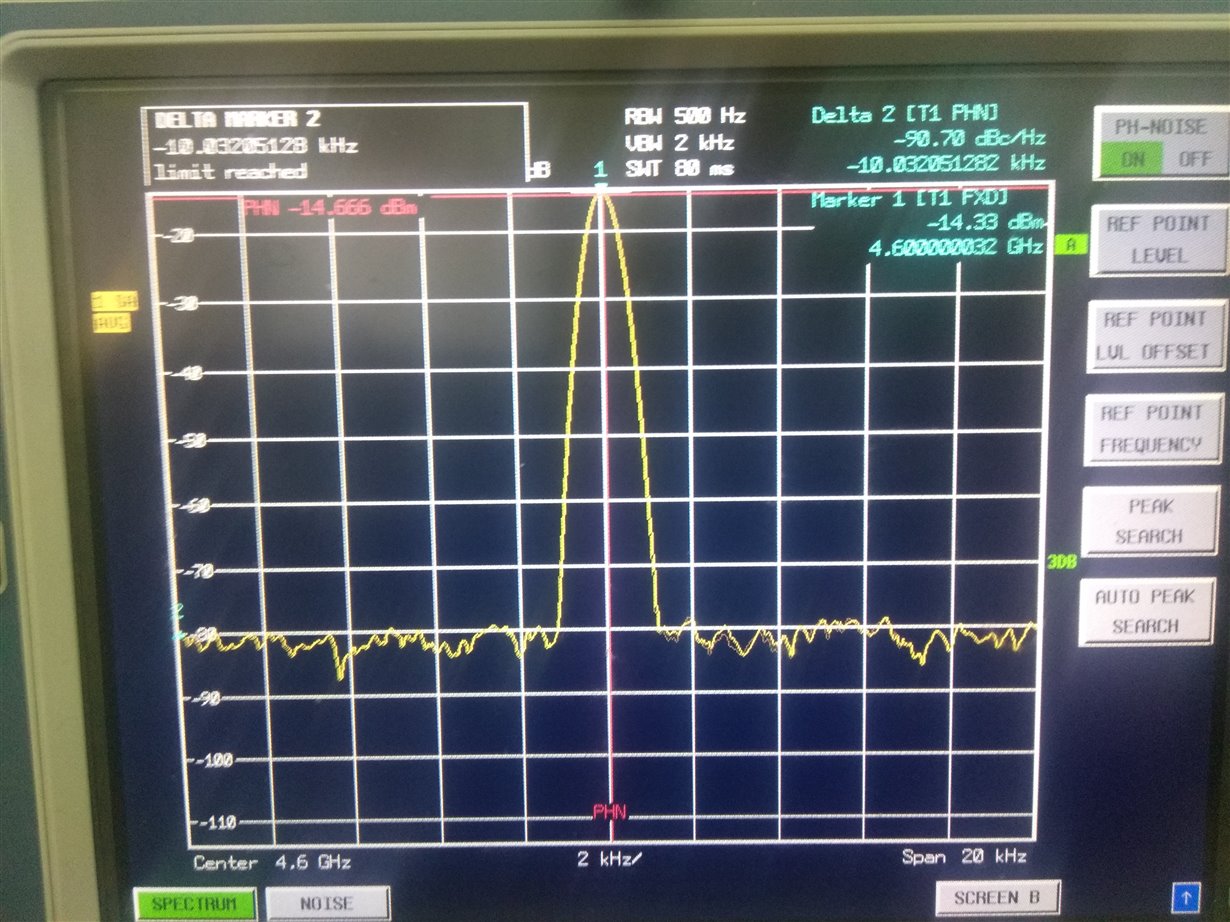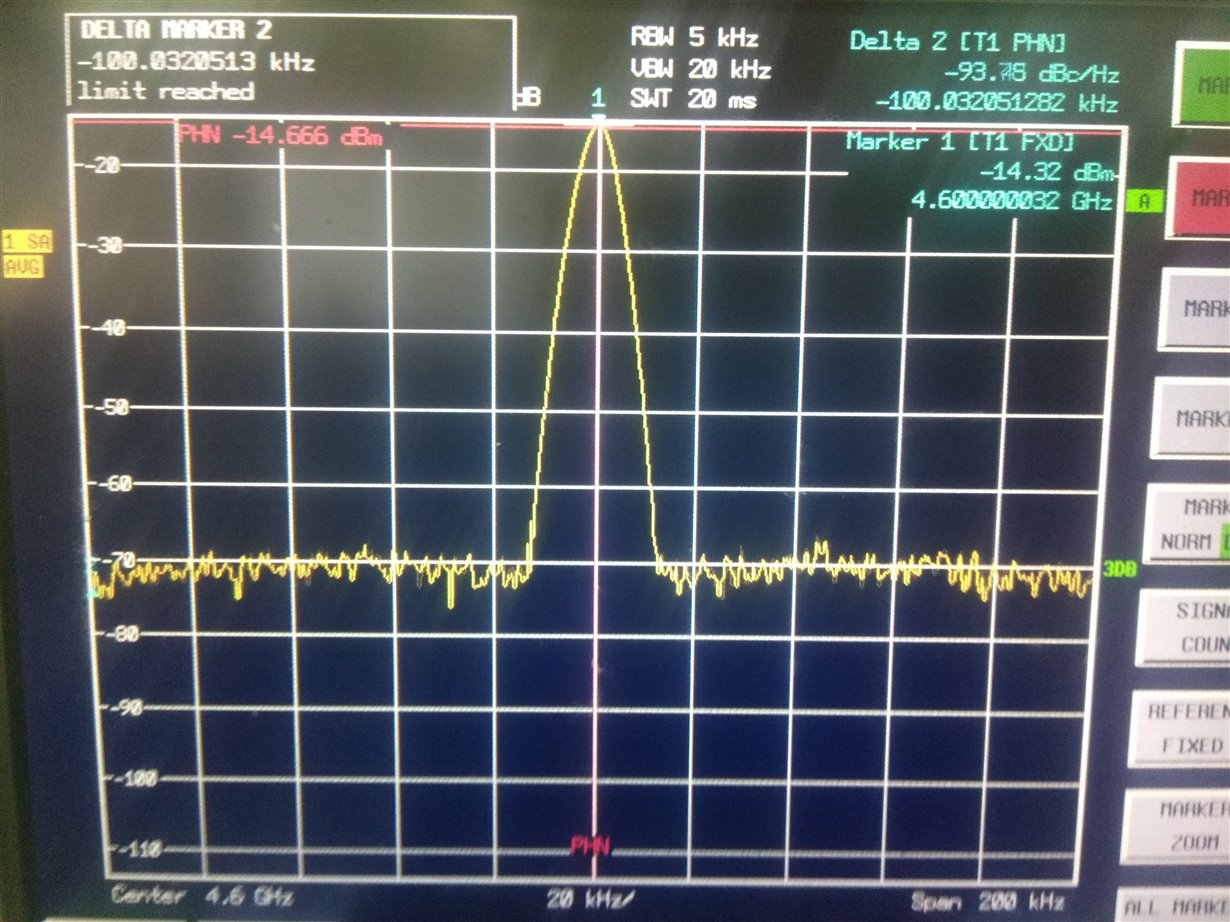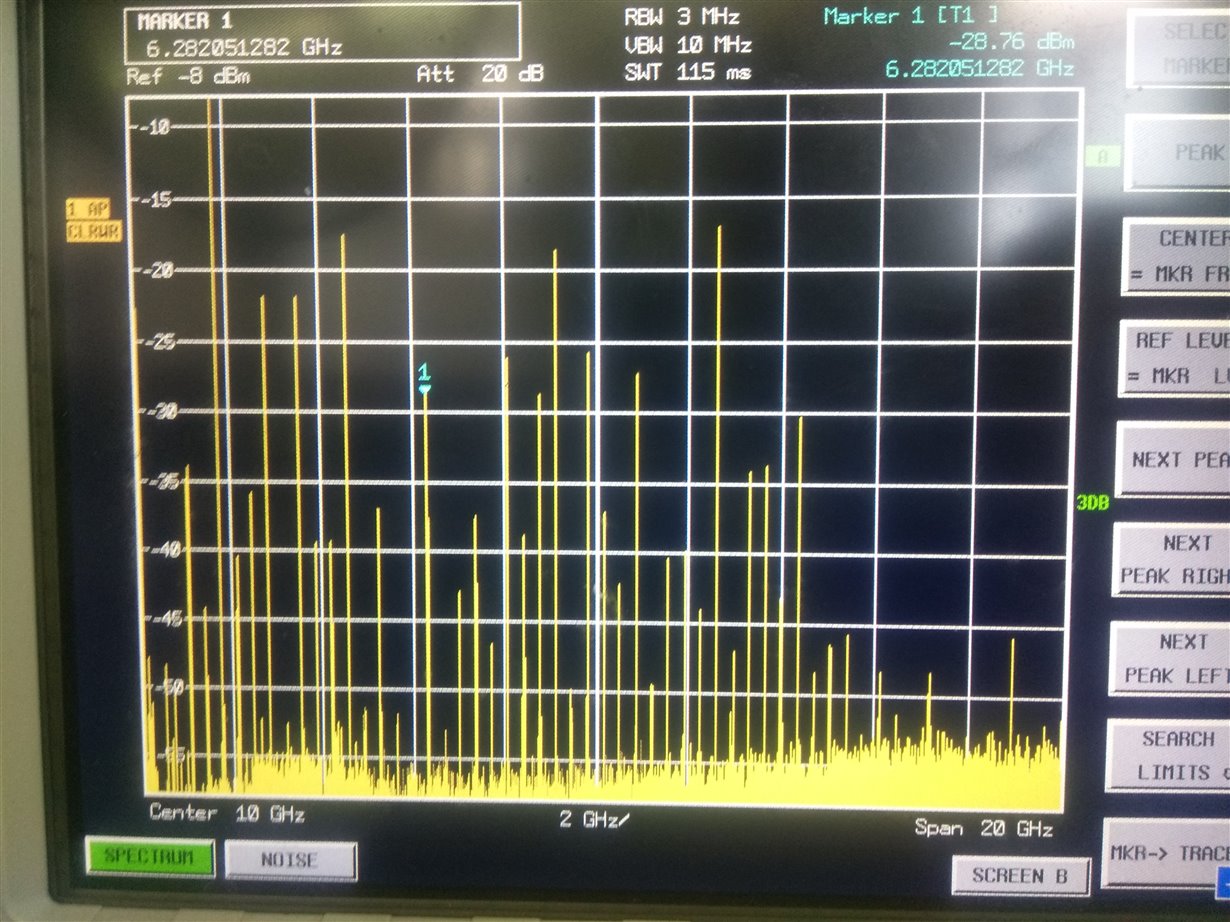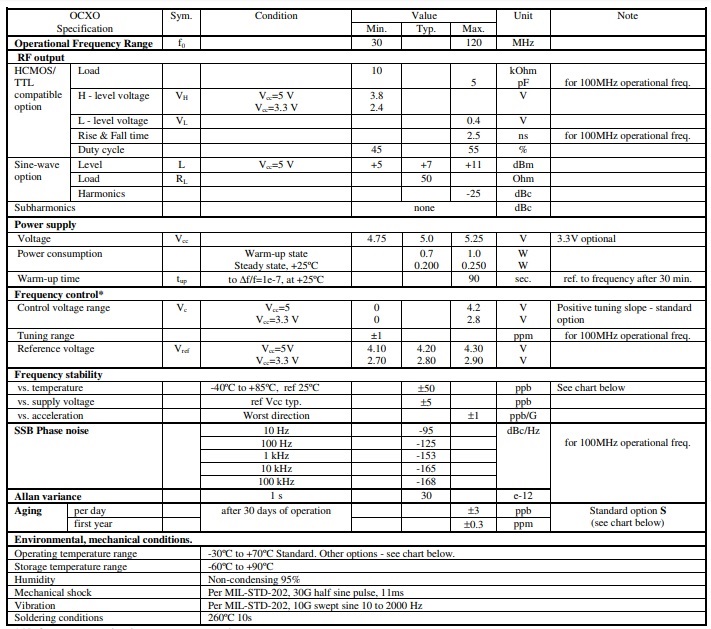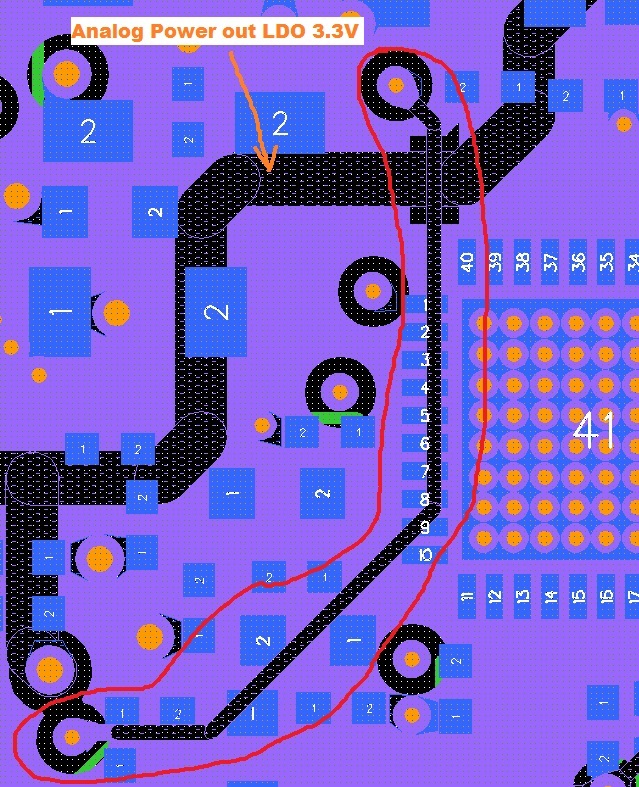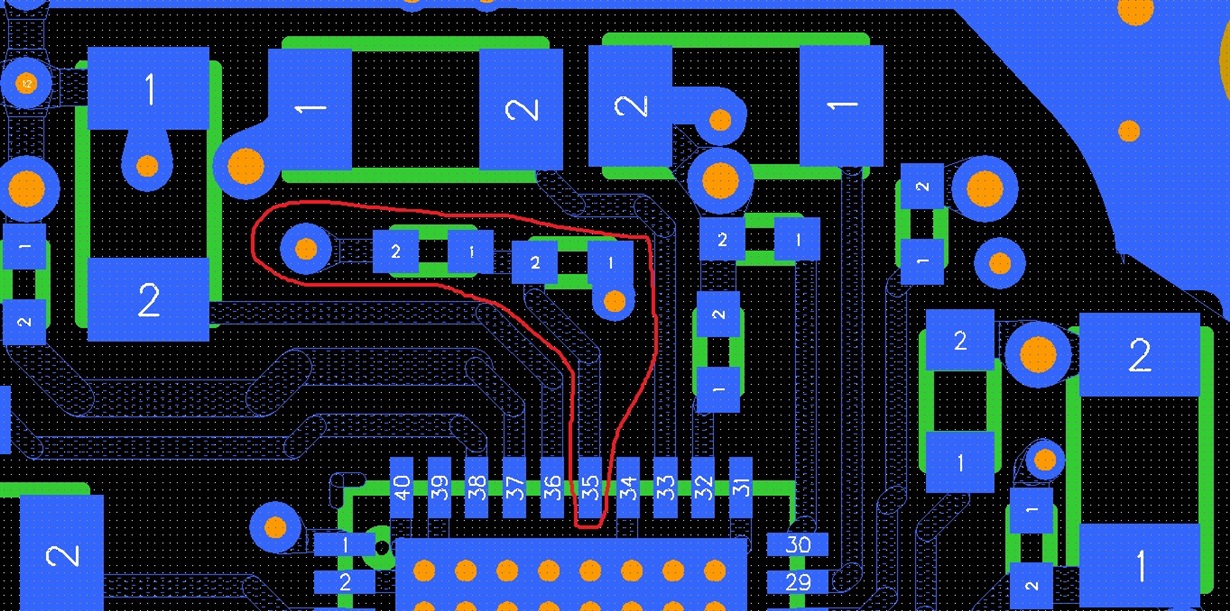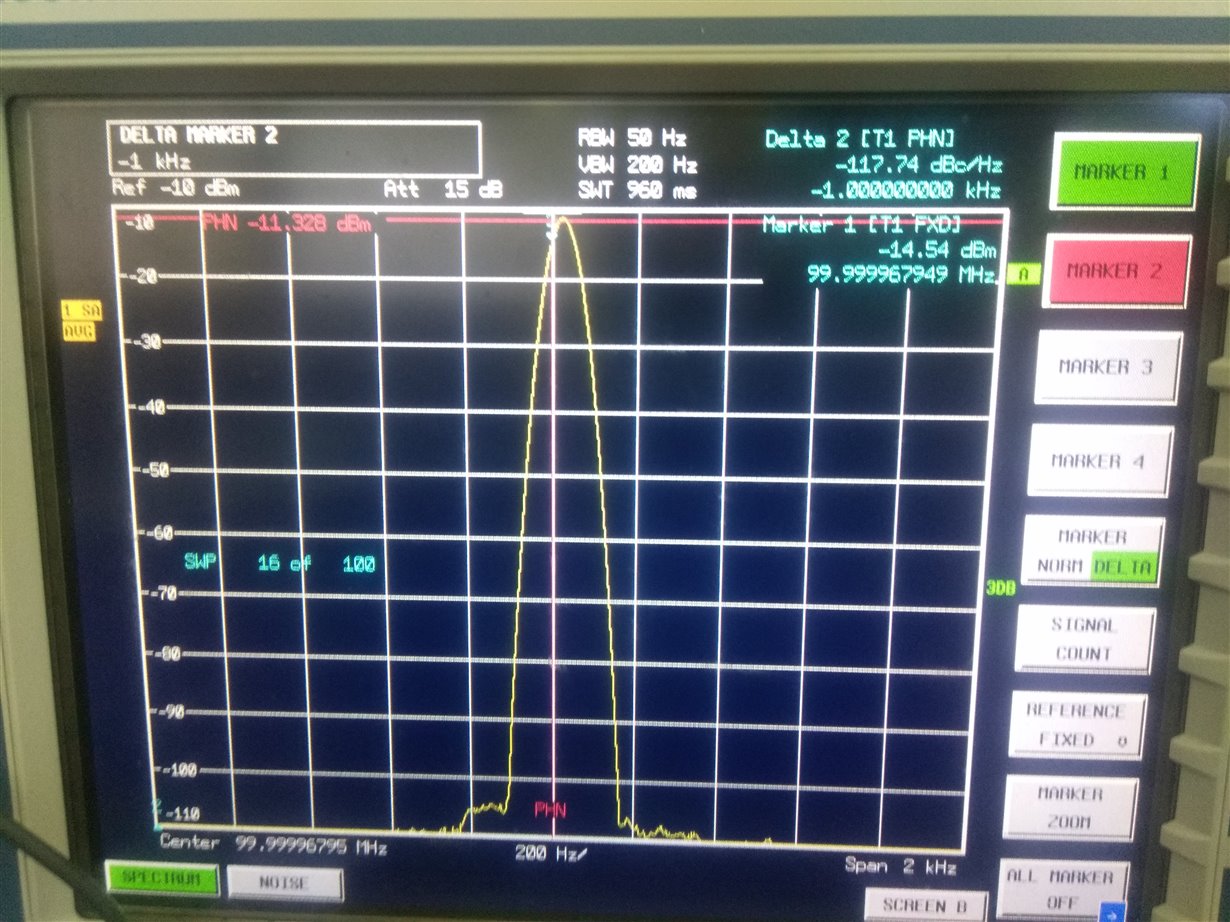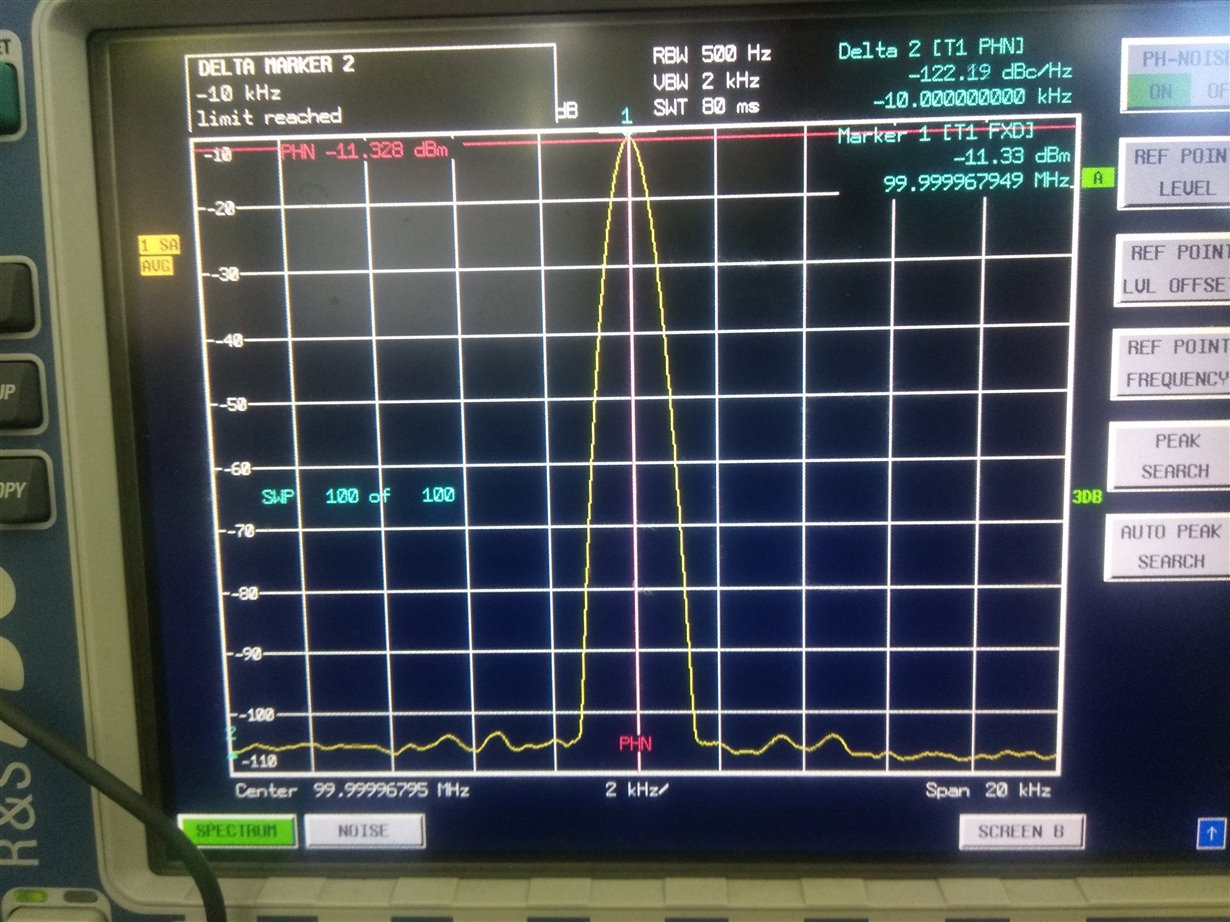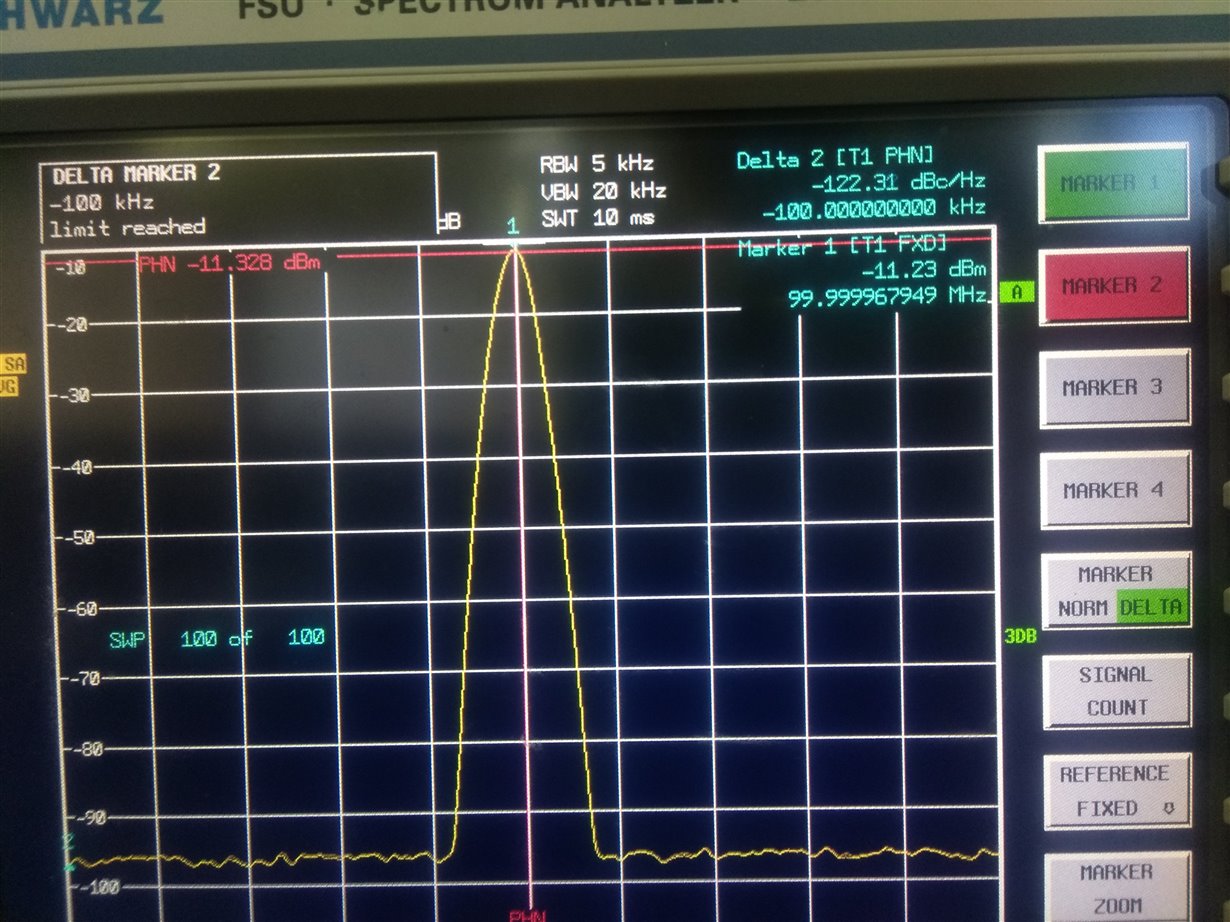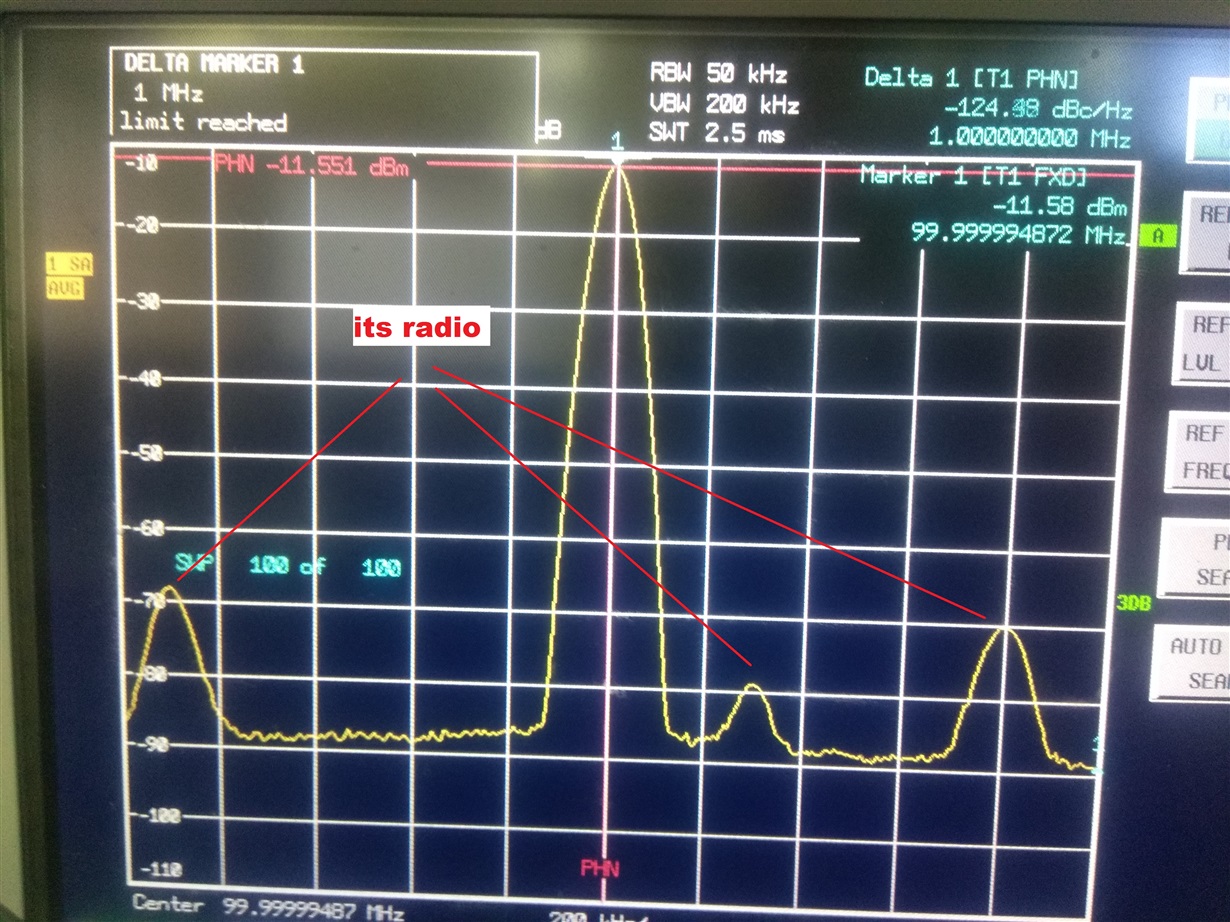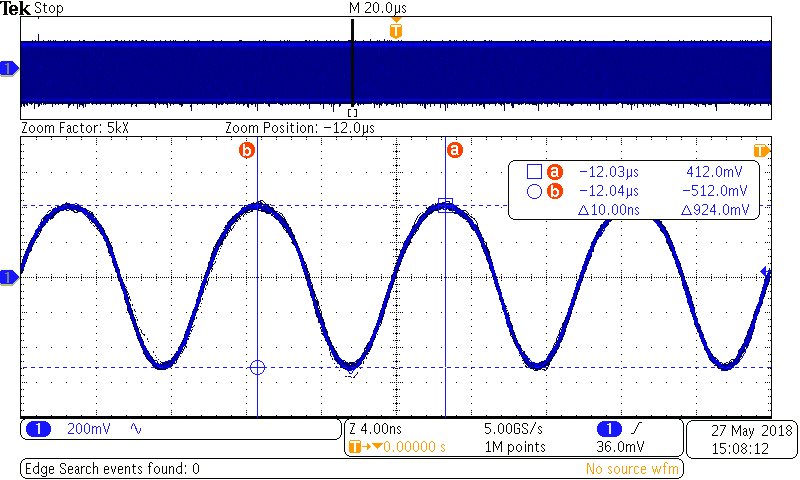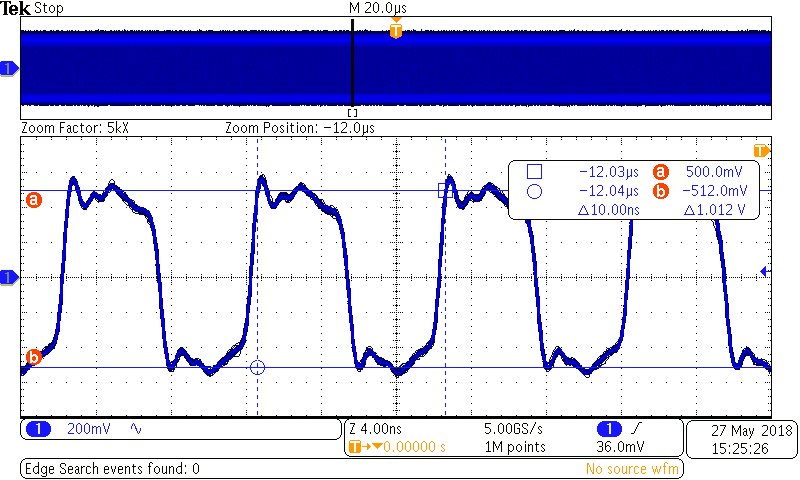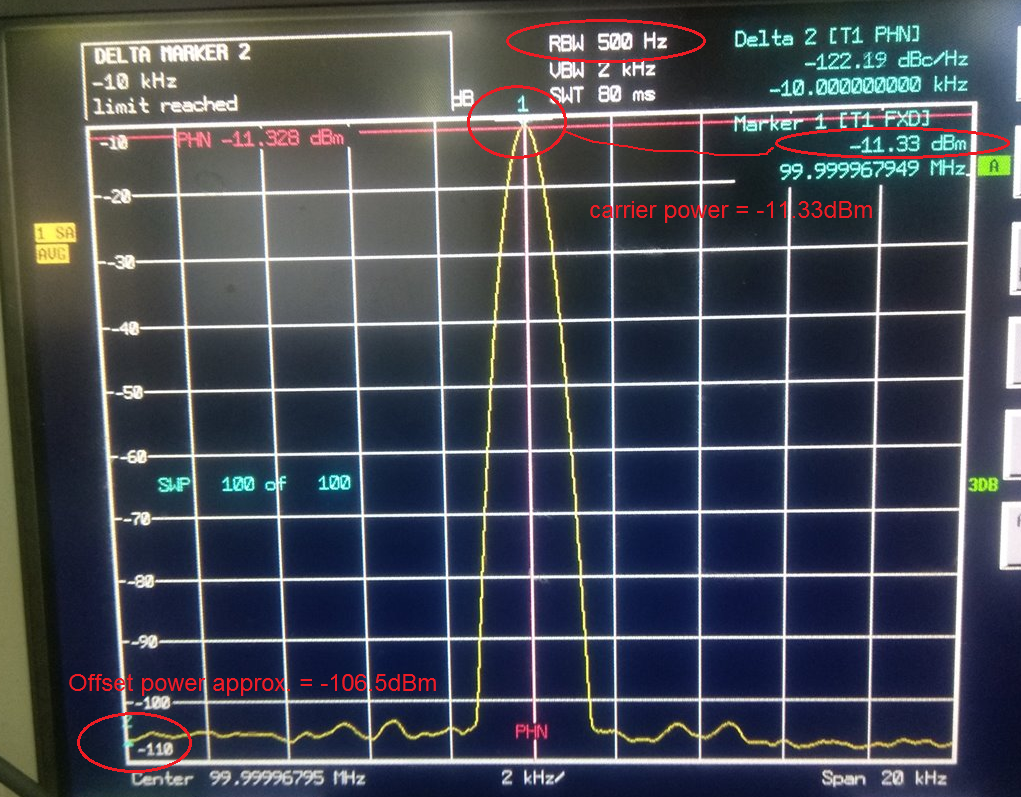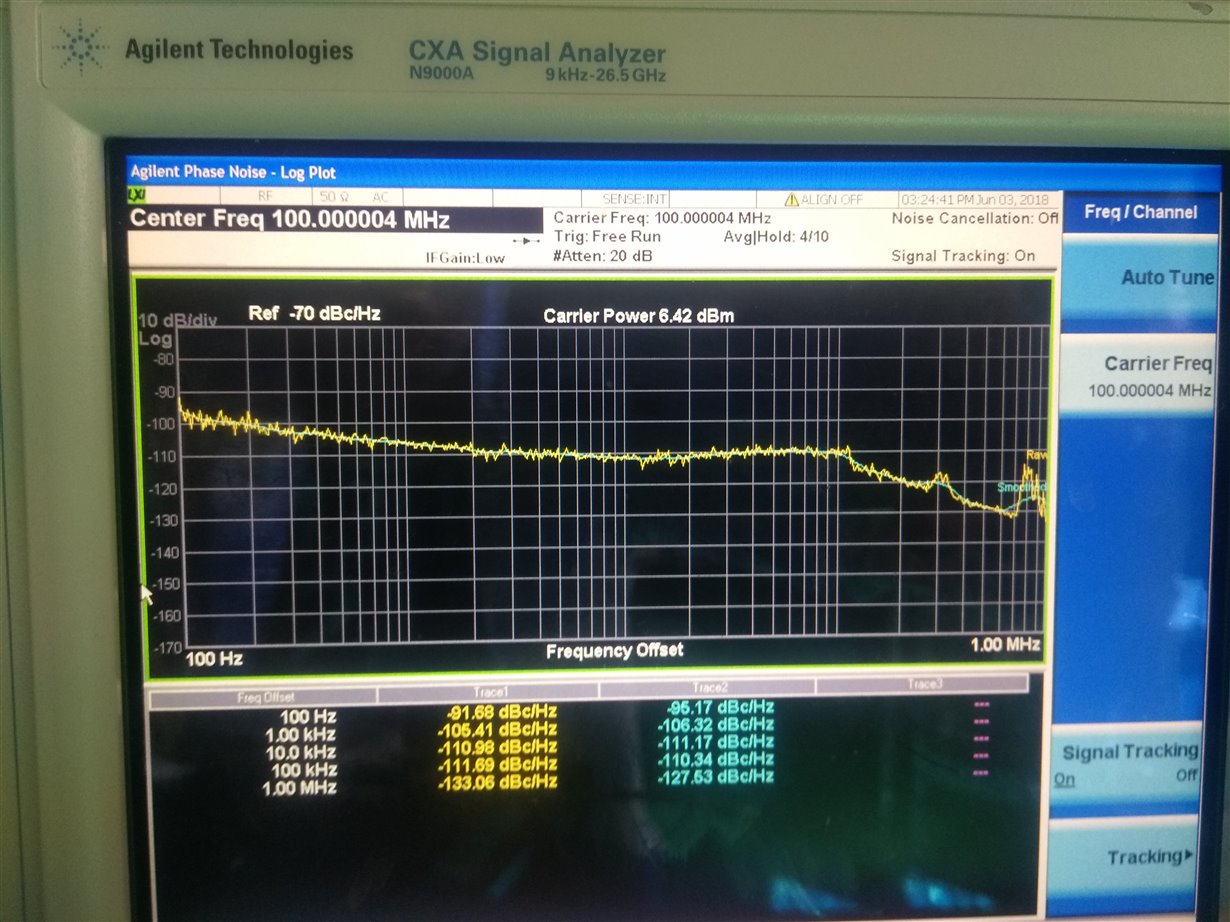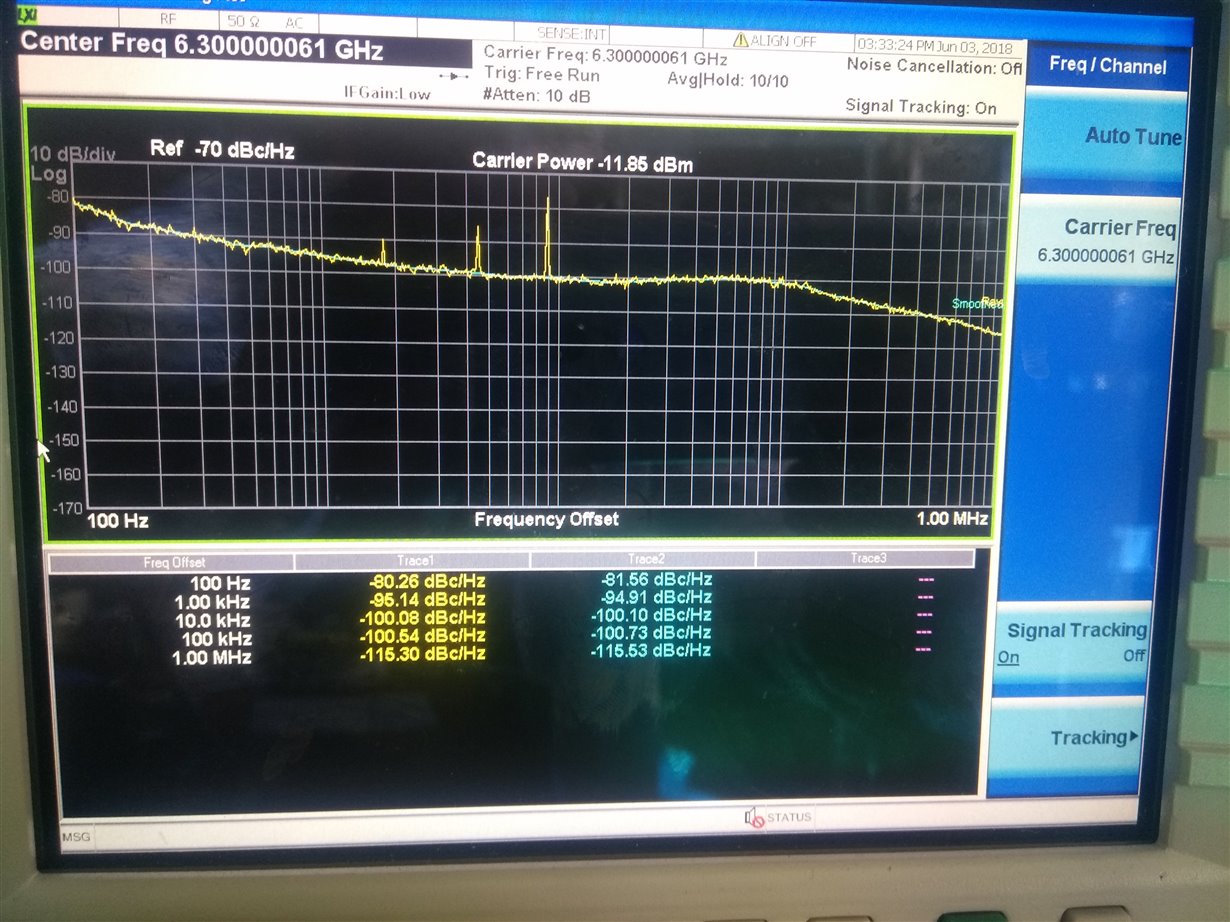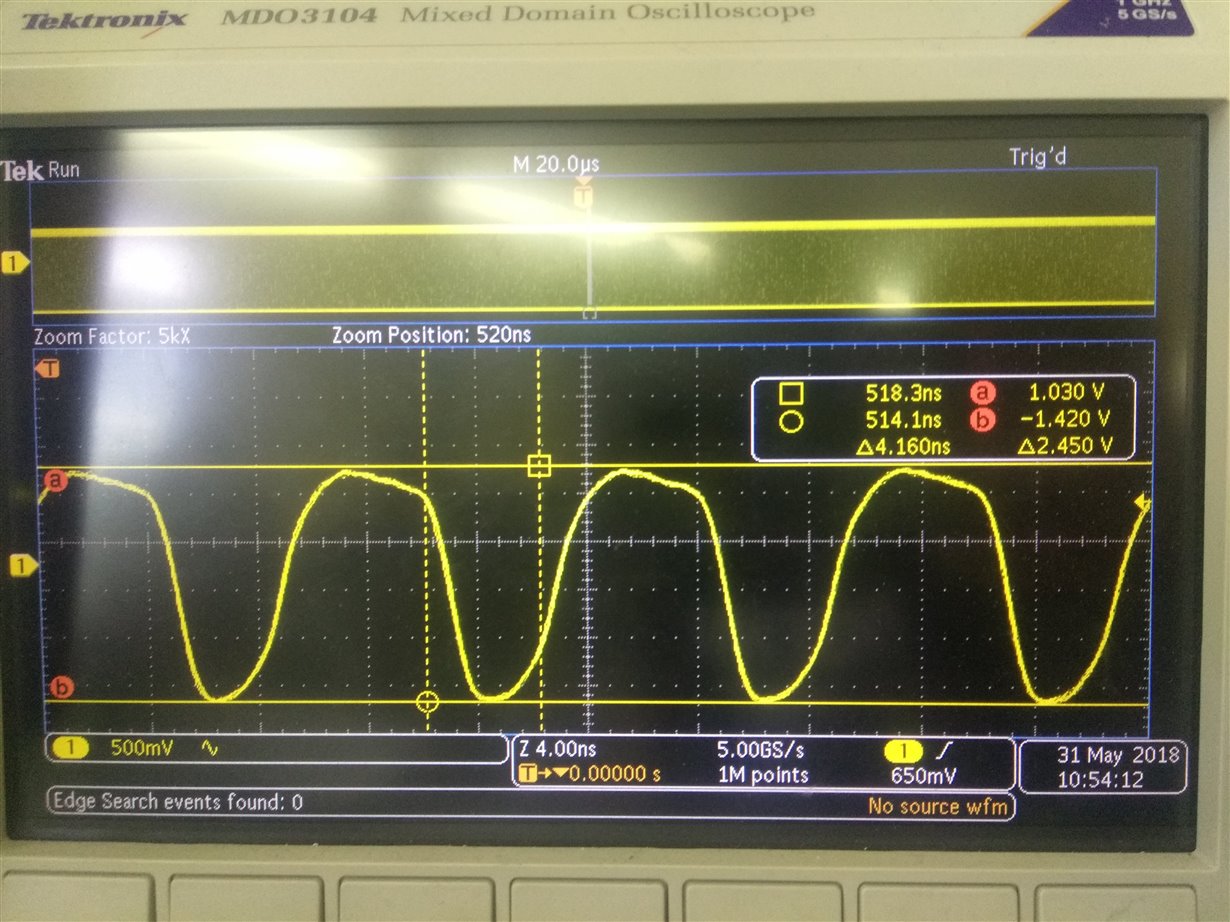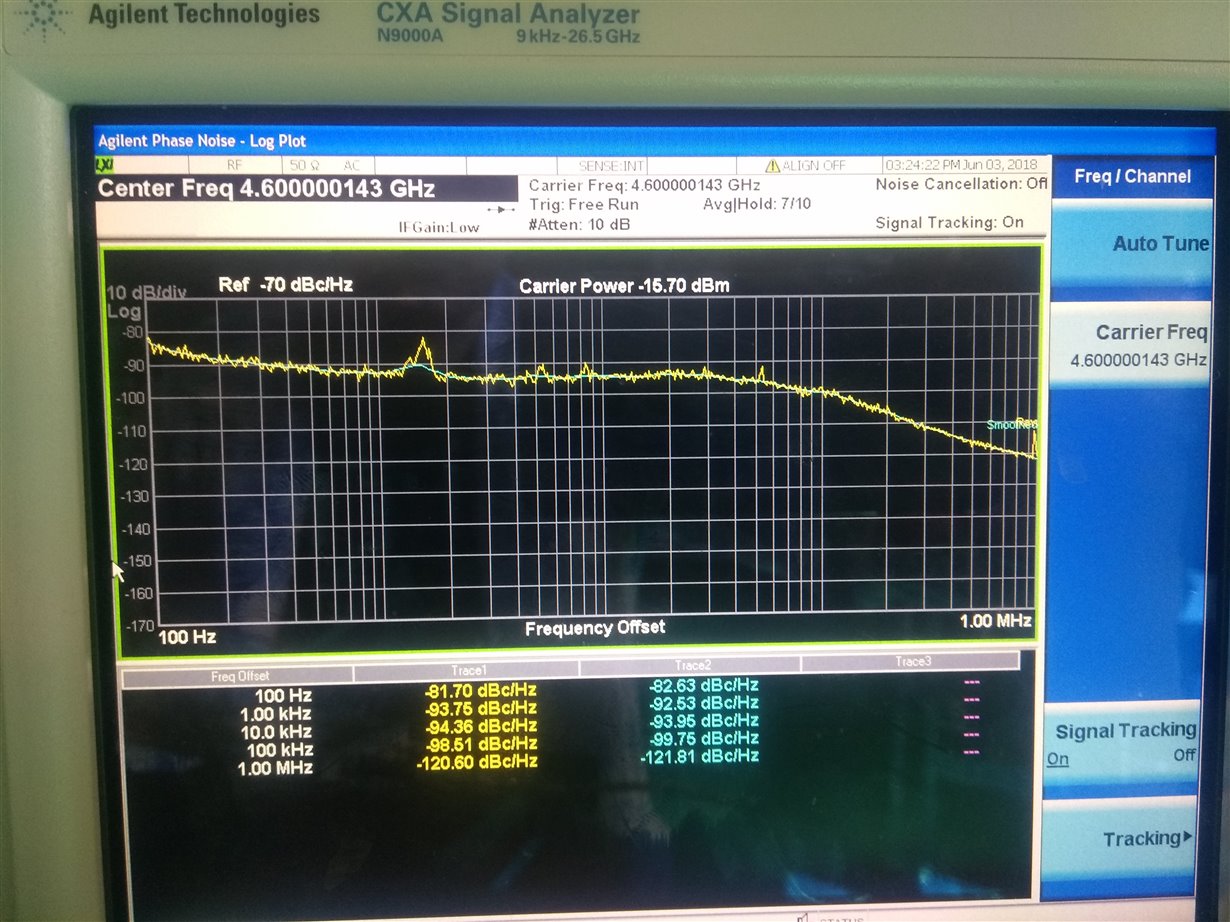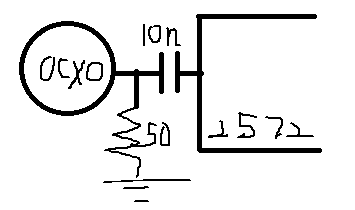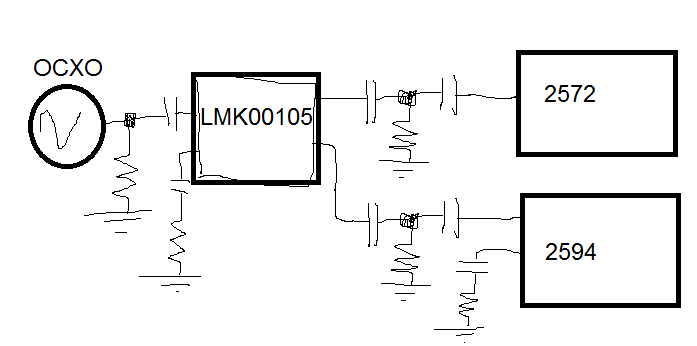Other Parts Discussed in Thread: LMX2594, , LMK00105, LMX2571
On the custom board, I use the LMX2572 and LMX2594 synthesizers to synthesize the frequencies 4600 - 4800 MHz (LMX2572) and the frequencies 6300 - 6500 MHz (LMX2594). The problem is that the LMX2572 synthesizer at frequencies 4600-4800 MHz has a high phase noise level at 10 kHz and 100 kHz (-90 dBc and 94 dBc, respectively).
At the LMX2594, the frequencies 6300 - 6500 MHz (12600 - 13000 MHz divided by 2) are not captured at all, rather they are captured, but at the output one can see the "palisade" from the harmonics of other frequencies, although, for example, the frequency is 7350 MHz (14700 MHz divided 2) is captured without problems, but the noise is also at 10 kHz and 100 kHz higher than the simulated values.
Maybe it's the board of course, but perhaps you will have some comments on the schematic and topolgy.
//LMX2572 C149, C157, C160, C184, C189 - GCM188R71E105KA64 (1 uF) C151, C153, C166, C167, C169, C186, C188 - GCM155R71H104KE02 (100 nF) C150 - GCM1555C1H470JZ13 (47 pF) C155, C162, C163, C165, C173, C183, C187 - GCM31CR71C106KA64 (10 uF) C164 - GRM188R71H473KA61 (47 nF) C168 - GCM1555C1H151JA16 (150 pF) C170 - GRM155R71H152KA01 (1.5 nF) C179, C180, C185 - GCM1555C1H101JA16 (100 pF) C191 - GCM1555C1H3R0CA16 (3 pF) L41 - B82496C3180J000 (18 nH) R90, R91, R99, R100, R105 - CR0402-FX-49R9 (50 Ohm) R92 - CR0402-FX-47R0 (47 Ohm) R93 - CR0402-FX-3600 (360 Ohm) R94 - CR0402-FX-27R0 (27 Ohm) R95, R96, R98, R104 - CR0402-FX-1001 (1 kOhm) R97, R101, R102 - CR0402-J/-000 (0 Ohm) R103 - CR0402-FX-1002 (10 kOhm) //LMX2594 C4 - GRM1555C1H680JZ01 (68 pF) C7, C10, C49, C53 - GCM155R71H104KE02 (100 nF) C2, C13, C17, C25,C29, C31, C46, C55 - GCM188R71E105KA64 (1 uF) C11, C20, C21, C23, C35, C45, C52 - GCM31CR71C106KA64 (10 uF) C22 - GRM188R71H473KA61 (47 nF) C30 - GRM1555C1H391JA01 (390 pF) C33 - GRM155R71H332KA01 (3,3 nF) C37, C39, C48 - GCM1555C1H101JA16 (100 pF) C58 - GCM1555C1H1R0CA16 (2 pF) L42 - B82496C3279Z000 (2,7 nH) R2, R5, R24, R25, R35 - CR0402-FX-49R9 (49,9 Ohm) R6 - CR0402-FX-15R0 (15 Ohm) R8 - CR0402-FX-1200 (120 Ohm) R14 - CR0402-FX-33R0 (33 Ohm) R15, R16, R21, R34 - CR0402-FX-1001 (1 kOhm) R18, R28, R29 - CR0402-J/-000 (0 Ohm) R32 - CR0402-FX-1002 (10 kOhm) // Power C192, C193, C305, C306 - AVXTPSB336K016R0350 (33 uF) C194, C195, C211, C213, C309, C312, C323, C325 - GCM188R71E105KA64 (100 nF) C313 - GCM155R71H681KA37 (680 pF) C314, C315 - GCM32EC71H106KA01 (10 uF) C216, C217, C327, C328 - GRM32ER61C476KE15 (47 uF) C331 - GRM21BR71E684KA88 (680 nF) C334 - GRM32ER71C226ME18 (22 uF) C208, C210, C318, C322 - GCM1555C1H102JA16 (1 nF) DA16, DA17, DA34, DA35 - ADM7170ACPZ-3.3 DA36 - LT3680IDD#PBF L38 - MOS6020-682ML (6,8 uH) R152, R154 - RL73K3AR10JTG (0,1 Ohm) R157, R159 - CR0603-FX-1502 (15 kOhm) R163 - CR0603-FX-1002 (10 kOhm) R164 - CR0603-FX-3742 (37,4 Ohm) VD3 - MBRA340T3G Z26, Z27, Z47, Z48 - NFM21HC105R1C3


